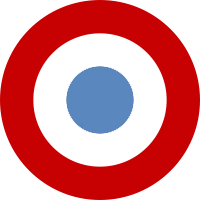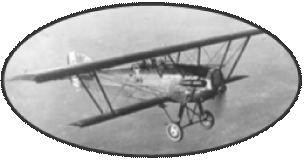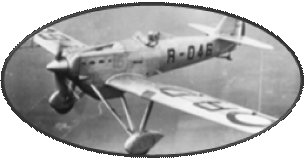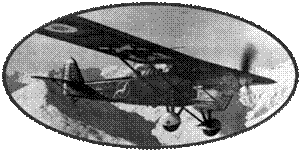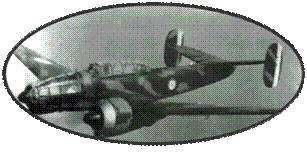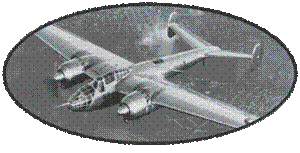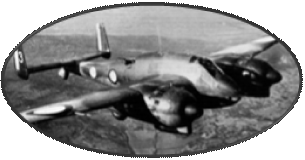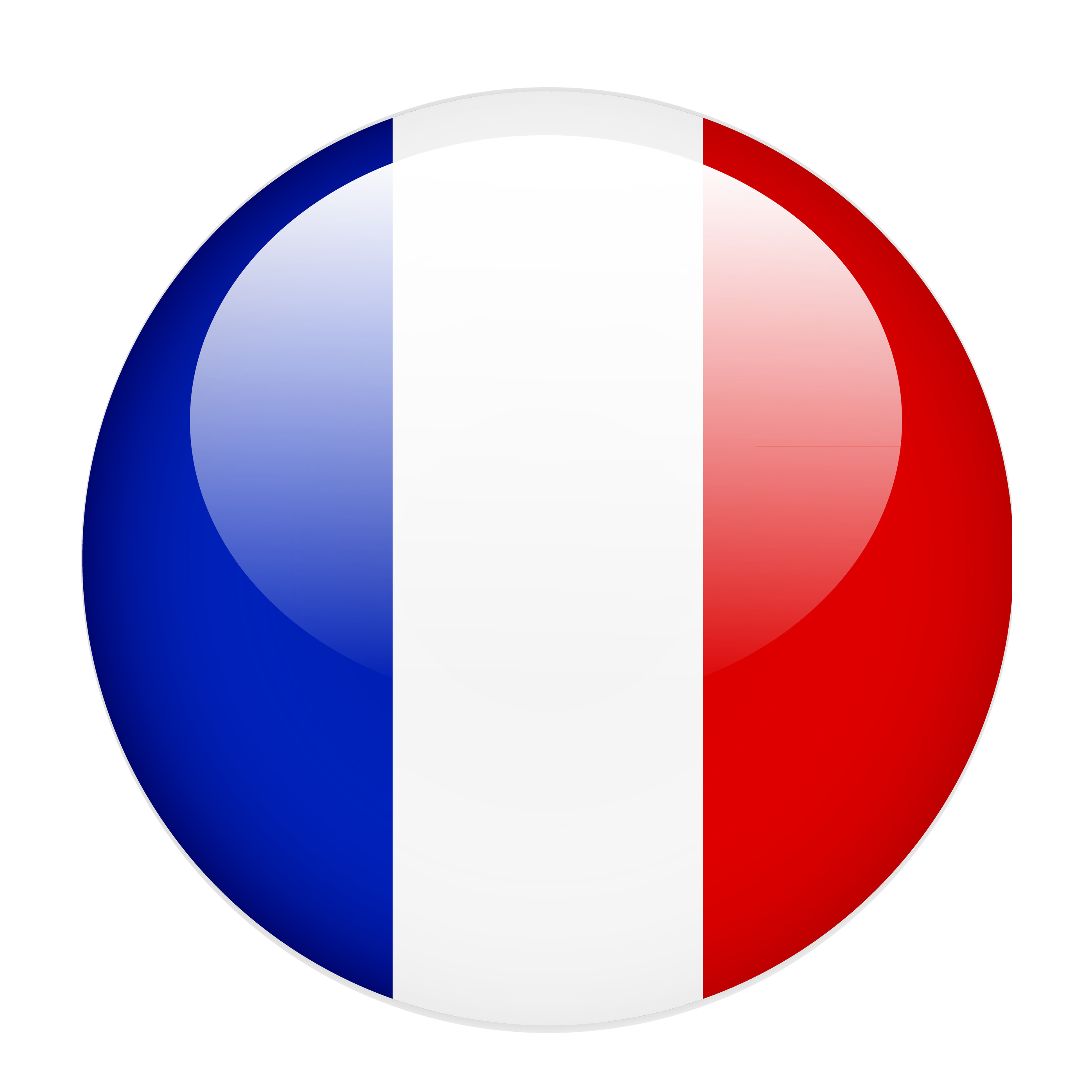 |
Site in French
|
|
DEWOITINE D371
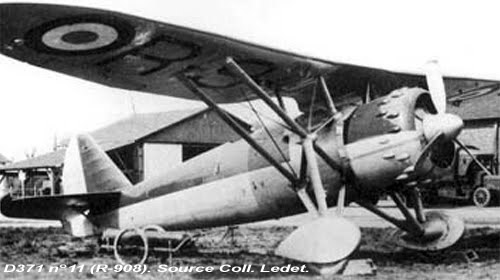
Technical
Specifications
|
Type
|
Mono-seat
Fighter with parasol wings
|
Date first flight
|
March
1934
|
|
Wingspan
|
11.70m
|
Lenght
|
7.225 m
|
|
Height
|
3,20m
|
Wing Area
|
18.30m2
|
|
Empty Weight
|
1300 Kg
|
Max. Takeoff Weight
|
1860 Kg
|
|
Cruising Speed
|
km/h.
|
Maximum Speed
|
402 km/h at 5000m
|
|
Climbing Speed
|
5000m in 5mn 40s
|
Service ceilling
|
10000m
|
|
Range
|
900kms
|
Crew
|
1
Pilot
|
|
Motorization
|
1 Radial
engine Gnôme Rhône 14 cylinder GR14Kfs of 880hp
at 3825m
|
|
Armament
|
4 machine-guns MAC
34 of 7.5mm in the wings with 300 rounds
|
89
Dewoitine ot the series D37 have been manufactured since the flight of the prototype of D37, 1st of October of 1931. They are divided into :
- 1
Dewoitine D37
-
29 Dewoitine D371
-
14 Dewoitine D372
-
20 Dewoitine D373
-
25 Dewoitine D376
To
date , out of the 29 D371 aircraft manufactured, 11 are listed
in the list below ::

The Dewoitine D371 is the
last of the monoplane parasol Fighter developed by the company
Dewoitine, and the studies result in a aircraft with a rather
balanced and elegant design. The first prototype of the series,
the Dewoitine D37, made its first flight on August 1, 1931, less
than a year before the first flight of the Dewoitine D500 with
low wings (June 8, 1932) The D37 is equipped with a Gnome-Rhone
engine Of 700 hp. The tests are conclusive, and an improved version,
the Dewoitine D371 is launched. It receives a more powerful radial
engine, the Rhone G7 Rhine 14 cyl GR14Kfs of 880ch and made its
first flight towards March 1934. It reaches 400km / h and is armed
with 4 machine guns of 7.5mm in the wings.
An order of 28 aircraft
passed through the Air Ministry in April 1935. The last Dewoitine
D371 of this order was completed in December 1935, but the prototype
is accidented due to a structural weakness detected in the design
of the wing: The whole series is returned to the factory for modification
and reinforcement. They were made available at the beginning of
1937 only. The Air Force, not knowing what to do with these planes
henceforth outdated, ceded 12 to the Spanish Republicans, 21 other
aircraft will join Tunis to form the regional Escadrilles of fighting
in creation, of which ERC 574 which will be endowed in June 1938.
They will be used little because of a low reliability of the engine,
whose reducer broke frequently, sometimes in flight. The remaining
aircraft will be removed from service with the arrival, in 1939,
of Moranes 406 delivered to ERC574.
Naval Aeronautics is also interested in the Dewoitine D371. It orders 40 copies for a naval version, under the designation of Dewoitine 373. It receives a landing stick and from the 21st exemplary, a system of foldable wings, the airplane then taking the designation D376. These planes, intended to equip the aircraft carrier Béarn quickly proved inadequate to the conditions of use: if the folding of the wings was fast, a few minutes, it took about one hour to put them back in position of flight. The engine showed itself, as for the D371 used by the Air Force, unreliable. The first landing stages took place on the Béarn at the end of 1938, but at the declaration of hostilities, the aircraft carrier Béarn was withdrawn from service and its squadrons AC1 and AC2 were based on shore.
At the beginning of the
war, naval aviation owned 14 Dewoitine 373 and 25 Dewoitine 376.
These fighters are now completely outdated. The AC2 is based in
Toulon, to defend the port and ships of the Navy, and AC 1, will
join Calais, in a much more exposed area. Fortunately, the D373
or D376 will never have to face the Luftwaffe, and the only losses
will be accidents, including a collision in flight, and an inadvertent
"folding" of the wings of a D376 on the occasion of a exercise
of attack on the ground ... This last accident nails the Dewoitine
on the ground, before having a agreement of use limited to flights
of training. The final ban of flight will be pronounced in April
1940, when they will be replaced by Potez 631.
It was finally on the Spanish
fighting theater that the Dewoitine D371 experienced its baptism
of fire. In view of the reliability problems encountered, Lithuania
renounced its order, and the 14 exemplaries of D372 (Export Version)
were delivered to the Spanish Republican forces in August 1936.
These aircraft were armed with 4 Vickers 7.5mm machine guns: 2
in the wings And 2 in the fuselage and are assigned to the squadron
España of André Malraux and the international squadron of the
Spanish Martin Luna. The first victories, in August 1936, are
made at the expense of Fiat CR32, and 21 victories are claimed
by the Escadrille España of André Malraux. These fightingss demonstrate
the qualities of the aircraft, which is considered better than
the Heinkel 51, and equivalent to the Italian Fiat CR32. 10 D.371
delivered by the French Air Force compensate for the loss of 4
Dewoitine D371. These aircraft were preceded by two other unarmed
shipments delivered in October 1936. The Dewoitines were gradually
replaced by Soviet aircraft, and the survivors were regrouped
in units devoted to coastal defense and advanced training. 6 Dewoitine
were still in a flying condition in December 1938, the last specimens
being all destroyed on the ground by an Italian bombardment on
the aerodrome of Bañola (Girona) on 5 February 1939.
|
Dewoitine D37
|
The
prototype made its first flight on October 1, 1931 equipped
with a 14-cylinder engine in dual-star Gnome and Rhone 14Kbrs
Mistral Major of 700 hp. With a monocoque fuselage, wings
with a metal frame and a fixed wide landing gear, this aircraft
had a classic look of the 1930s. The aircraft was modified
several times, receiving a Gnome and Rhone 14Kbs, then a 14
kds of 800 hp (740 hp to 4,500 m), various engine hoods were
tested, the lander was modified, then the wing received a
dihedron and its rope was reduced. |
|
Dewoitine D371
|
A second prototype,
with engine Gnome and Rhone 14Kes of 800 hp and various modifications,
took the air in September 1934. Different armaments were tested,
the assembly in the wing of 2 guns of 20 mm. 28 units were
ordered in April 1935 for the French Air Force as part of
Plan I with a 14Kfs engine developing 930 hp at take-off and
880 hp at 3,250 m, and four M.54 machine guns of 7.5 mm Under
the sail. The Gnome and Rhone 14Kfs engine saved 20 km / h
and allowed a theoretical ceiling of 10 000 m, but was to
be the big defect of this fighter: unreliable, its reducer
broke easily in flight. |
|
Dewoitine D372
|
14 exemplaries ordered
by Lithuania with 2 Darne machine guns in the wings and 2
Synchronized fuselage 7.7 mm Browning. Given the problems
encountered with the engine, the Lithuanian government finally
canceled the order in favor of Dewoitine D.501. When they
became available, they were handed over to the Spanish Republicans.
|
|
Dewoitine D373
|
20
exemplaries ordered by the French Naval Aeronautics. The armament
was identical to that of the Air Force aircraft, but the wing
was reduced by 30 cm to pass in the lift of the aircraft carrier
Béarn and a landing stick and a flotation system were Added
in the fuselage. |
|
Dewoitine D376
|
25 new aircraft for
French Naval Aeronautics, with folding wing. The system of
folding of the wings was never to the point: if the folding
proper could be carried out in a few minutes, it took well
an hour to put the wings in position. |
Bibliography
|
1 ) _ Editions LELA
PRESSE ; Magazine"Avions" No103 et 104
- "Les Dewoitine D371 dans l'armée de l'air"


|
Photos
Album
|
